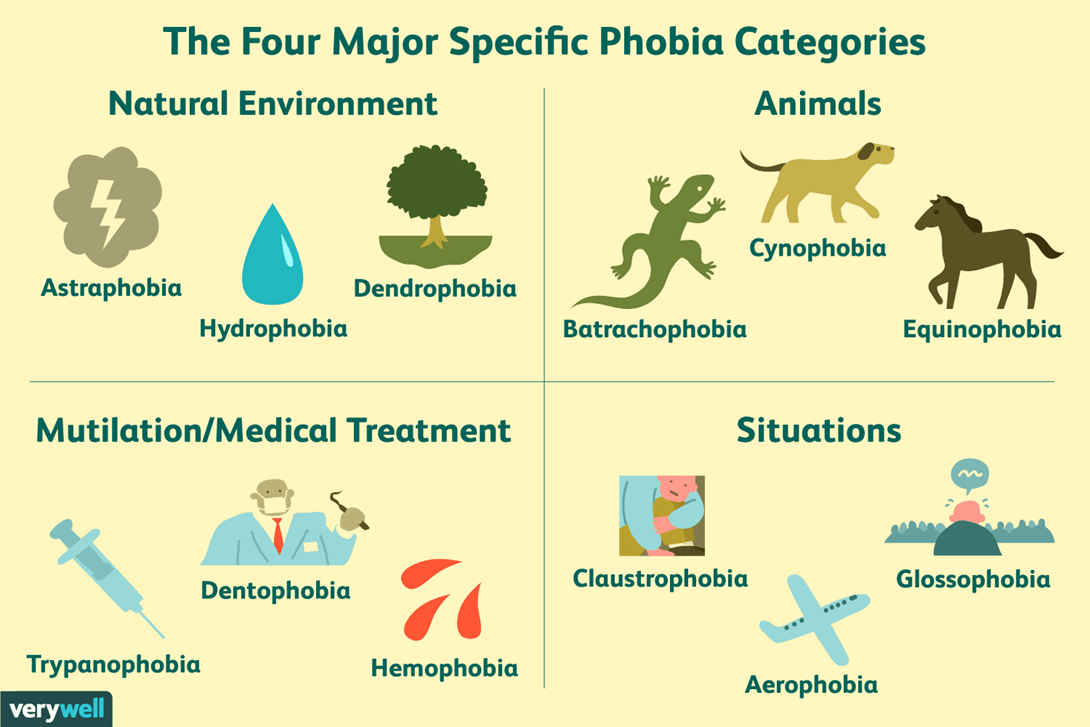A nurse is providing care to a client with a situational phobia. Which techniques would the nurse most likely include as an intervention in the client's plan of care? (Select all that apply.)
Assertiveness training.
Systematic desensitization.
Flooding.
Decatastrophizing.
Reminding the person to calm down.
Correct Answer : B,C,D
Choice A reason: Assertiveness training is not a direct intervention for situational phobias, although it may help improve overall confidence.
Choice B reason: Systematic desensitization is a common technique used to treat phobias, where the client is gradually exposed to the fear-inducing situation in a controlled manner.

Choice C reason: Flooding is an exposure technique where the client is exposed to a high level of fear-inducing stimuli all at once, which can be effective for some phobias.
Choice D reason: Decatastrophizing helps clients challenge and change catastrophic thoughts that often accompany phobias.
Choice E reason: Simply reminding a person to calm down is not a therapeutic technique and is unlikely to be effective for someone with a situational phobia.
Nursing Test Bank
Naxlex Comprehensive Predictor Exams
Related Questions
Correct Answer is C
Explanation
Choice A reason: Acrophobia is the fear of heights, which is not indicated by the client's fear of being outdoors alone.
Choice B reason: Xenophobia is the fear of strangers or foreigners, which does not align with the client's described fear.
Choice C reason: Agoraphobia is the fear of open spaces or being in crowded, public places like markets. It also includes the fear of leaving a safe place, such as home, which aligns with the client's symptoms.
Choice D reason: Mysophobia is the fear of germs, which is not related to the fear of being outdoors alone.
Correct Answer is ["A","C","E"]
Explanation
Choice A reason:
Individuals with Paranoid Personality Disorder often exhibit distrust and suspicion of others. A matter-of-fact approach is beneficial as it avoids emotional engagement that could be perceived as threatening or deceitful. This approach helps in maintaining clear boundaries and reduces the potential for misunderstanding or paranoia.
Choice B reason:
For those with Avoidant Personality Disorder, a matter-of-fact approach might not be as effective because these individuals are often sensitive to negative evaluation and rejection. They may require a more supportive and encouraging approach to help them feel more comfortable in social interactions.
Choice C reason:
People with Schizotypal Personality Disorder display eccentric behaviors and have difficulty forming close relationships. A matter-of-fact approach can provide structure and clarity without overwhelming them with emotional intensity, which they may find difficult to process.
Choice D reason:
Individuals with Narcissistic Personality Disorder may not respond well to a matter-of-fact approach as they often have an inflated sense of self-importance and a need for admiration. They may perceive this approach as dismissive or not adequately acknowledging their perceived self-worth.
Choice E reason:
Those diagnosed with antisocial personality disorder tend to disregard the rights of others and may manipulate or treat others harshly. A matter-of-fact approach is useful as it sets clear expectations and limits, which is necessary to manage potentially manipulative or harmful behaviors.
Whether you are a student looking to ace your exams or a practicing nurse seeking to enhance your expertise , our nursing education contents will empower you with the confidence and competence to make a difference in the lives of patients and become a respected leader in the healthcare field.
Visit Naxlex, invest in your future and unlock endless possibilities with our unparalleled nursing education contents today
Report Wrong Answer on the Current Question
Do you disagree with the answer? If yes, what is your expected answer? Explain.
Kindly be descriptive with the issue you are facing.
